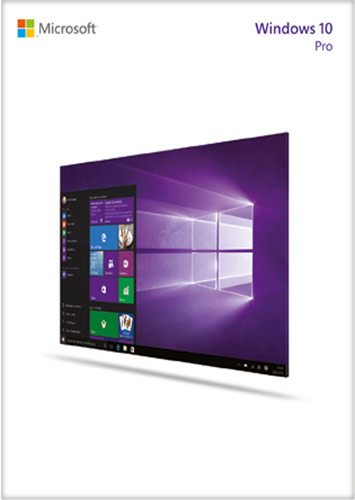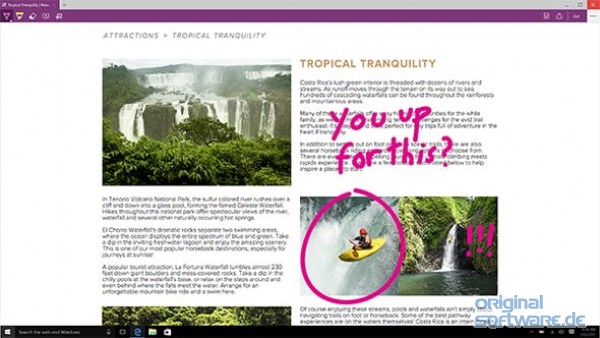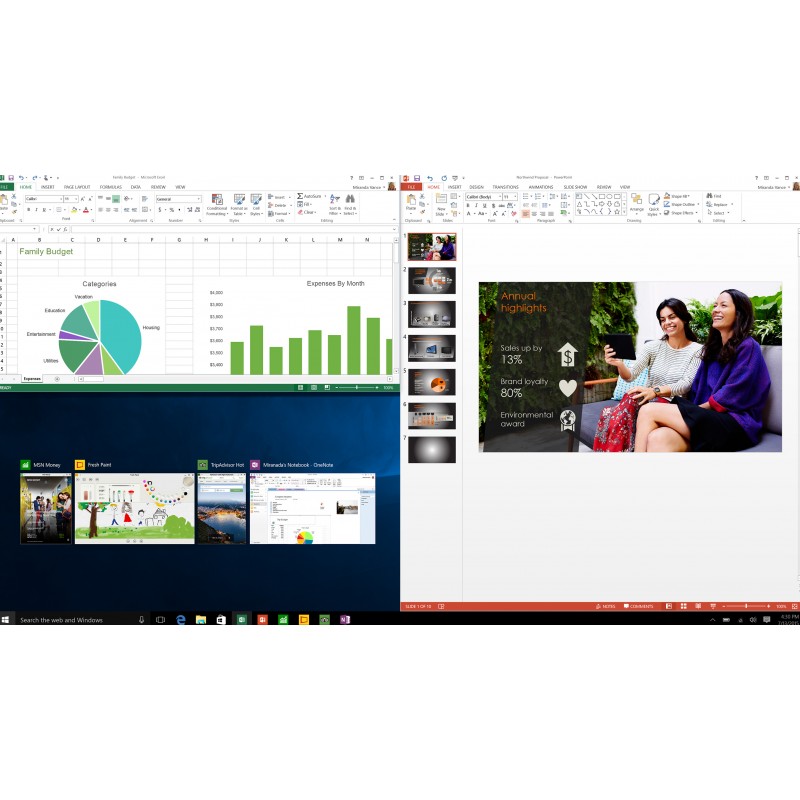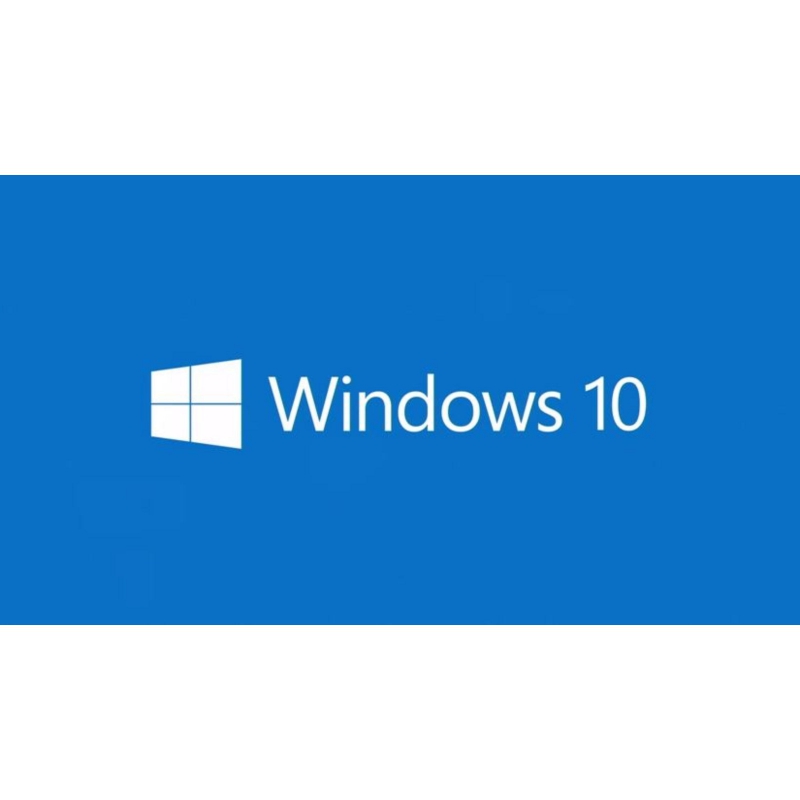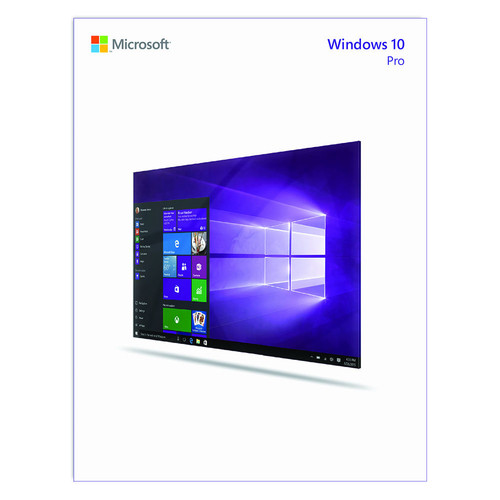The new Start menu takes after Windows 7's design by using only a portion of the screen and including a Windows 7-style application listing in the first column. The second column displays Windows 8-style app tiles. Myerson said that these changes would occur in a future update, but did not elaborate. Windows Phone 8.1 would share nearly 90% of the common Windows Runtime APIs with Windows 8.1 on PCs. The upgrade offer was marketed and initiated using the "Get Windows 10" application, which was first downloaded and installed via Windows Update in March 2015. Registry keys and group policies could be used to partially disable the GWX mechanism, but the installation of patches to the GWX software via Windows Update could reset these keys back to defaults, and thus reactivate the software.
Third-party programs were also created to assist users in applying measures to disable GWX. Extended support until January 13, 2032The original release of Windows 10 receives mainstream support for five years after its original release, followed by five years of extended support, but this is subject to conditions. Microsoft stated that these devices would no longer receive feature updates, but would still receive security updates through January 2023.
Microsoft will continue to support at least one standard Windows 10 release until October 14, 2025. Other critics argued that Microsoft should not have triggered any downloading of Windows 10 installation files without user consent. In March 2016, some users also alleged that their Windows 7 and 8.1 devices had automatically begun upgrading to Windows 10 without their consent. In June 2016, the GWX dialog's behavior changed to make closing the window imply a consent to a scheduled upgrade.
It was concluded that these users may have unknowingly clicked the "Accept" prompt without full knowledge that this would begin the upgrade. A new iteration of the Start menu is used on the Windows 10 desktop, with a list of places and other options on the left side, and tiles representing applications on the right. The menu can be resized, and expanded into a full-screen display, which is the default option in Tablet mode. A new virtual desktop system was added by a feature known as Task View, which displays all open windows and allows users to switch between them, or switch between multiple workspaces. Universal apps, which previously could be used only in full screen mode, can now be used in self-contained windows similarly to other programs.
Program windows can now be snapped to quadrants of the screen by dragging them to the corner. When a window is snapped to one side of the screen, Task View appears and the user is prompted to choose a second window to fill the unused side of the screen (called "Snap Assist"). Feature updates prior to version 1909 are distributed solely as an in-place upgrade installation, requiring the download of a complete operating system package (approximately 3.5 GB in size for 64-bit systems). Unlike previous builds, version 1909 is designed primarily as an update rollup version of 1903, focusing primarily on minor feature additions and enhancements.
For upgrades to 1909 from 1903, a new delivery method is used where its changes were delivered as part of the monthly cumulative update, but are left in a dormant state until the 1909 update "enablement" patch is installed. The full upgrade process is still used for those using builds prior to 1903. Windows 10 received generally positive reviews upon its original release. Critics also praised the improvements to Windows 10's bundled software over Windows 8.1, Xbox Live integration, as well as the functionality and capabilities of the Cortana personal assistant and the replacement of Internet Explorer with Microsoft Edge.
Unfortunately, I have un-installed my windows store apps, don't know how to re-installed it. After searching on the internet I stuck this website and read your article about re-installed windows store using Powershell, I tried it and finally I succeed. New Universal Windows Platform apps (.Appx/.AppxBundle) on Windows 10 are usually installed online through the Microsoft Store. Despite Windows allows to install universal apps from the appx file , you cannot directly download the .appx installer file from the Windows Store.
In this article, we will show you how to download an APPX file of any UWP application from the Microsoft Store and manually install it on Windows 10. You can use this guide to deploy APPX apps on computers that don't have access to the Microsoft Store , as well as on Windows 10 LTSC edition . 10 Home and Pro is "Semi-Annual Channel " (formerly "Current Branch", or "CB"), which receives stable builds after they are publicly released by Microsoft. Each build of Windows 10 is supported for 18 months after its original release. In enterprise environments, Microsoft officially intends that this branch is used for "targeted" deployments of newly released stable versions so that they can be evaluated and tested on a limited number of devices before a wider deployment.
On May 2, 2017, Microsoft unveiled Windows 10 S , a feature-limited edition of Windows 10 which was designed primarily for devices in the education market , such as the Surface Laptop that Microsoft also unveiled at this time. The OS restricts software installation to applications obtained from Microsoft Store; the device may be upgraded to Windows 10 Pro for a fee to enable unrestricted software installation. As a time-limited promotion, Microsoft stated that this upgrade would be free on the Surface Laptop until March 31, 2018. Windows 10 S also contains a faster initial setup and login process, and allows devices to be provisioned using a USB drive with the Windows Intune for Education platform. Windows 10 introduces Microsoft Edge, a new default web browser.
It initially featured a new standards-compliant rendering engine derived from Trident, and also includes annotation tools and integration with other Microsoft platforms present within Windows 10. Internet Explorer 11 is maintained on Windows 10 for compatibility purposes, but is deprecated in favor of Edge and will no longer be actively developed. In January 2020, the initial version of Edge was succeeded by a new iteration derived from the Chromium project and the Blink layout engine and the old Edge based on EdgeHTML is now called 'Microsoft Edge Legacy'. The legacy version of Edge is currently being replaced by the new Chromium-based Edge via Windows Update, though this version can also be downloaded manually. Every Windows 10 version from 20H2, which was released on October 20, 2020, will come with the new version of the browser preinstalled. The Windows 10 October 2020 update added a price comparison tool to the Edge browser.
The Anniversary Update added Windows Subsystem for Linux , which allows the installation of a user space environment from a supported Linux distribution that runs natively on Windows. The subsystem translates Linux system calls to those of the Windows NT kernel . The environment can execute the Bash shell and 64-bit command-line programs (WSL 2 also supports 32-bit Linux programs and graphics, assuming supporting software installed, and GPUs support for other uses). Windows applications cannot be executed from the Linux environment, and vice versa. Linux distributions for Windows Subsystem for Linux are obtained through Microsoft Store. The feature initially supported an Ubuntu-based environment; Microsoft announced in May 2017 that it would add Fedora and OpenSUSE environment options as well.
In October 2015, Windows 10 began to appear as an "Optional" update on the Windows Update interface, but pre-selected for installation on some systems. A Microsoft spokesperson said that this was a mistake, and that the download would no longer be pre-selected by default. In December 2015, it was reported that a new advertising dialog had begun to appear, only containing "Upgrade now" and "Upgrade tonight" buttons, and no obvious method to decline installation besides the close button.
10 heavily emphasizes freemium services, and contains various advertising facilities. Some outlets have considered these to be a hidden "cost" of the free upgrade offer. This edition is designed for "special-purpose devices" that perform a fixed function . For this reason, it excludes Cortana, Microsoft Store, and all bundled Universal Windows Platform apps .
Unlike previous versions of Windows, Windows Update does not allow the selective installation of updates, and all updates are downloaded and installed automatically. Users can only choose whether their system will reboot automatically to install updates when the system is inactive, or be notified to schedule a reboot. Version 1703 allows wired networks to be designated as metered, but Windows may still download certain updates while connected to a metered network. By default, Store apps all receive automatic updates.
This is much easier than the update prompts most desktop apps provide, as you don't have to worry about visiting the site and downloading the newest version manually. Uninstalling a Store app is also much cleaner than a desktop app, as there are no Registry entries and other scattered data to remove. Modern UWP apps can be installed and updated with one click thanks to the My Library feature of Microsoft Store. It saves the list of apps you have installed and purchased, so you can quickly get the required app on another device you own without searching for it again in the Store. When you have signed in to the Store with your Microsoft account on a new device, you will be able to install the apps you already own . Microsoft Store saves the list of your devices for that purpose.
This works when you are signed in with your Microsoft Account. Critics have acknowledged that Microsoft's update and testing practices had been affecting the overall quality of Windows 10. In particular, it was pointed out that Microsoft's internal testing departments had been prominently affected by a major round of layoffs undertaken by the company in 2014. Microsoft relies primarily on user testing and bug reports via the Windows Insider program , as well as correspondence with OEMs and other stakeholders. In the wake of the known folder redirection data loss bug in the version 1809, it was pointed out that bug reports describing the issue had been present on the Feedback Hub app for several months prior to the public release.
Following the incident, Microsoft updated Feedback Hub so that users may specify the severity of a particular bug report. Windows 10 provides greater integration with the Xbox ecosystem. Windows 10 also allows users to control and play games from an Xbox One console over a local network. The Xbox Live SDK allows application developers to incorporate Xbox Live functionality into their apps, and future wireless Xbox One accessories, such as controllers, are supported on Windows with an adapter.
Microsoft also intends to allow cross-purchases and save synchronization between Xbox One and Windows 10 versions of games; Microsoft Studios games such as ReCore and Quantum Break are intended as being exclusive to Windows 10 and Xbox One. Device Guard is designed to protect against zero-day exploits, and runs inside a hypervisor so that its operation remains separated from the operating system itself. The Windows Runtime app ecosystem was revised into the Universal Windows Platform .
These universal apps are made to run across multiple platforms and device classes, including smartphones, tablets, Xbox One consoles, and other devices compatible with Windows 10. Windows 10 is a major release of Microsoft's Windows NT operating system. It is the direct successor to Windows 8.1, which was released nearly two years earlier. It was released to manufacturing on July 15, 2015, and later to retail on July 29, 2015. Windows 10 was made available for download via MSDN and TechNet, as a free upgrade for retail copies of Windows 8 and Windows 8.1 users via the Windows Store, and to Windows 7 users via Windows Update. Windows 10 receives new builds on an ongoing basis, which are available at no additional cost to users, in addition to additional test builds of Windows 10, which are available to Windows Insiders.
Devices in enterprise environments can receive these updates at a slower pace, or use long-term support milestones that only receive critical updates, such as security patches, over their ten-year lifespan of extended support. The recent updates have made Windows Store applications in a Windows 11/10 PC important as the users can directly head over to the store and download any application they want to. The Windows Store is legit and one of the safest ways to get your applications onboard. Some people have reported that the Windows Store app is not opening or even that the Microsoft Store itself is missing once they are updated to Windows 11 or Windows 10.
If Microsoft Store is missing, then this post will show you how to reinstall the Microsoft Store in Windows 11/10 and get it back using this PowerShell command. On January 21, 2016, Microsoft was sued in small claims court by a user whose computer had attempted to upgrade to Windows 10 without her consent shortly after the release of the operating system. The upgrade failed, and her computer was left in a broken state thereafter, which disrupted the ability to run her travel agency. The court ruled in favor of the user and awarded her $10,000 in damages, but Microsoft appealed. However, in May 2016, Microsoft dropped the appeal and chose to pay the damages.
Charms have been removed; their functionality in universal apps is accessed from an App commands menu on their title bar. In its place is Action Center, which displays notifications and settings toggles. It is accessed by clicking an icon in the notification area, or dragging from the right of the screen. Notifications can be synced between multiple devices. The Settings app was refreshed and now includes more options that were previously exclusive to the desktop Control Panel. On September 30, 2014, Microsoft officially announced that Threshold would be unveiled during a media event as Windows 10.
Myerson said that Windows 10 would be Microsoft's "most comprehensive platform ever", providing a single, unified platform for desktop and laptop computers, tablets, smartphones, and all-in-one devices. He emphasized that Windows 10 would take steps towards restoring user interface mechanics from Windows 7 to improve the experience for users on non-touch devices, noting criticism of Windows 8's touch-oriented interface by keyboard and mouse users. Despite these concessions, Myerson noted that the touch-optimized interface would evolve as well on 10. Microsoft originally announced Windows 11's new app store in June, and since then, the company has been trying to improve the quality of its marketplace. Several servicing updates have been released as part of the Windows Insider Program and users have been testing the new Store on their devices for more than three months now. As you know, there is no Microsoft Store in the LTSC version of Windows 10.
Most users use this version because it is stable and uses minimal resources. But the lack of a Microsoft store was a bit annoying. Fortunately, there is a solution to this problem.
It is also to install the Windows store application manually. The Windows Store is where you'll download new apps for your Windows 8 device, much like the App Store for Apple devices. Most apps are designed to run from the Start screen. In this lesson, you'll learn how to browse the store, download and install apps, and update apps when necessary.
As you may already know, Windows 10 comes with its own Store app. Like Android has Google Play, and there's the App Store in iOS, the Microsoft Store app adds the ability to deliver digital content to the end user in Windows. There is a group policy that can be used to restrict access to all Microsoft Store apps, including pre-installed and manually downloaded packages. The Microsoft Store app will also be disabled. As of the May 2019 update, the minimum disk space requirement has been increased to 32 GB.
In addition, on new installations, Windows permanently reserves up to 7 GB of disk space in order to ensure proper installation of future feature updates. 10 product keys, meaning they could be entered during installation to activate the free license, without the need to upgrade first to "activate" the hardware with Microsoft's activation servers. Since the release of the Fall Creators Update , Microsoft decided to release multi-edition installation media, to alleviate installation and product activation issues users experienced because of accidentally installing the wrong edition of Windows 10. Windows 10 is available in five main editions for personal computing devices; the Home and Pro editions of which are sold at retail in most countries, and as pre-loaded software on new computers. Home is aimed at home users, while Pro is aimed at power users and small businesses.
Enterprise and Education, the other editions, contain additional features aimed towards business environments, and are only available through volume licensing. Credentials are stored in an encrypted form on Microsoft servers and sent to the devices of the selected contacts. Passwords are not viewable by the guest user, and the guest user is not allowed to access other computers or devices on the network. Wi-Fi Sense is not usable on 802.1X-encrypted networks. Adding "_optout" at the end of the SSID will also block the corresponding network from being used for this feature. I have one machine from this time which has user data on the local machine rather than on the remote desktop (c-level manager) but I noticed that all of the seemingly built-in apps are missing and traced it back to running this script.
The problem is, the powershell script also uninstalls the Microsoft Store App and the user wants to install an app from there. For the past few weeks, we've been working with the Microsoft WSL team to get Kali Linux introduced into the Microsoft App Store as an official WSL distribution and today we're happy to announce the availability of the "Kali Linux" Windows application. For Windows 10 users, this means you can simply enable WSL, search for Kali in the Windows store, and install it with a single click.
This is especially exciting news for penetration testers and security professionals who have limited toolsets due to enterprise compliance standards. These links download the official GIMP installer for Windows (~250 MB). The installer contains both 32-bit and 64-bit versions of GIMP, and will automatically use the appropriate one. This installation will also provide regular update.









